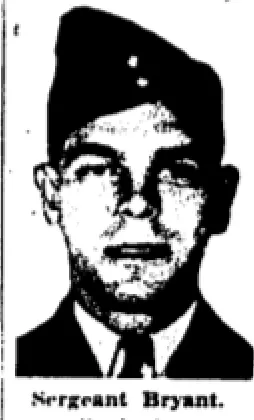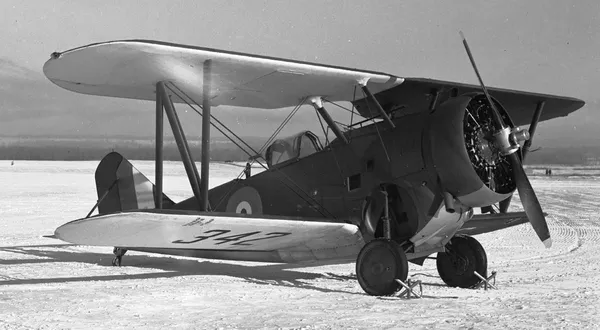Bryant, Robert Murray
Killed in Action 1941-07-23


Birth Date: 1914-February-12
Born:
Son of Joseph Wilfred and Mary Ellen Bryant, of Toronto.
Home: Toronto, Ontario
Enlistment:
Enlistment Date: Unknown
Service
RCAF
Unit
118 Sqn- Squadron (RAF)
Occido Redeoque I kill and return
Base
RCAF Stn. Dartmouth Nova Scotia
Rank
Sergeant
Position
Sergeant
Service Numbers
R/65736
Home
 Toronto, Ontario
Toronto, Ontario
First Burial
 Park Lawn Cemetery At Toronto, Ontario
Park Lawn Cemetery At Toronto, Ontario
This incident involved multiple aircraft:
- Goblin Serial: 336
All the above aircraft in the above list are referenced in this report.
Grumman Goblin

One is preserved in the National Museum of Naval Aviation, Pensacola, Florida.
The Grumman FF "Fifi" (company designation G-5) was an American biplane fighter flown by the United States Navy during the 1930s. It was the first carrier aircraft with retractable landing gear. It was produced under licence in Canada and known as the Goblin in Canadian service and Delfin ("Dolphin") in Spanish service. Wikipedia
The Canadian Car & Foundry Company acquired a manufacturing licence for the Grumman G-23, and improved FF-1, of which it completed a total of 52, some of which were assembled from US-built components. Although initially rejected as a fighter by the RCAF as outdated and too slow, with the advent of war, the last 15 of the CC&F production batch were taken on strength as the Goblin I. The aircraft type served with the RCAF from 17 September 1940 until 21 April 1942. "A" Flight of No. 118 RCAF Squadron was equipped with Goblins at Rockcliffe in Ottawa, and subsequently became No. 118 (Fighter) Squadron, later stationed at Dartmouth, Nova Scotia where the Goblins for a time constituted the sole fighter force on the east coast. One CCF-built G-23 was sold to the Nicaraguan government where it saw limited service before being relegated to a scrap yard at Zololtan Air Field in 1942, destined to remain there until 1961 when it was purchased and shipped to the USA. In 1966, Grumman restored the aircraft before passing it to the US Navy where it is currently on display at the National Museum of Naval Aviation at Pensacola, Florida.Harold Skaarup web page
Goblin 336
Goblin 336
First assigned to the School of Army Cooperation in Rockcliffe, ON. To No. 118 (F) Sqn, in Rockcliffe,ON as of 21 Feb 1941 and then to Dartmouth, NS as of Jul 1941. A week after the Sqn's arrival at
Dartmouth from Rockcliffe on 23 Jul 1941, #336 took off to practice low-flying "surprise" attacks with
Sergeant R.M. Bryant at the controls. At approximately 16:00 hrs, the a/c was seen diving towards
Lawrencetown Lake at very low level. The a/c struck a electric power pole bordering a nearby road,
ripped one wing off, and then crashed into the swampy shore of the lake about 350 yards away. The pilot was thrown clear of the wreckage but had been fatally injured upon impact. The airframe was
totally destroyed. The poor forward visibility from the cockpit was noted as a contributing factor for the accident.
source: Kestrel Publications
1940-10-15 Taken on Strength 2019-08-20
1941-July-23 Accident: 118 Fighter Squadron Loc: Aerodrome Names: Bryant
1941-09-22 Struck off Strength - Cat "A" write-off 2023-10-16
 Canadian Virtual War Memorial
Canadian Virtual War Memorial Commonwealth War Graves Commission
Commonwealth War Graves Commission www.findagrave.com
www.findagrave.com Goblin Fighter
Goblin Fighter Wikipedia Goblin Fighter
Wikipedia Goblin Fighter Harold A Skaarup Web Page
Harold A Skaarup Web Page Grumman Goblin - Kestrel Publications
Grumman Goblin - Kestrel Publications